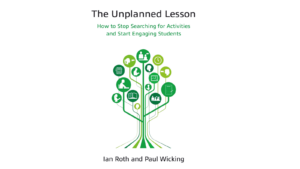The question of whether to teach grammar prescriptively or descriptively has been much debated in the ELT community.
On the one hand, teaching prescriptive grammar, according to a fixed set of rules, might be necessary for teachers who need to prepare students for contexts in which they need to use English in a particular way. Exams, or academic English, tend to require students to use a standardized version of English, and students may be marked down if they use an alternative. On the other hand, teaching descriptive grammar, according to how language is actually used, is considered essential in helping learners to communicate better in authentic situations, arguably, the main goal in language teaching.
In the preface for “A Descriptive Grammar of English”, Andrew Rossiter is clear in explaining his reasons for choosing the latter. Whilst he acknowledges the need to teach language that is considered grammatically correct, in order to avoid breakdowns in communication, he also makes it clear that the language taught should also reflect the reality in which it is used. Importantly, he highlights the changing nature of language, conceding that explanations and examples run the risk of becoming out of date as the English language evolves. It is then apt, perhaps, that this book is available as print-on-demand, ensuring that the reader receives the most recently up-to-date version of the book at the time of purchase.
The book appears to be designed very much as a point of reference for teachers looking for information or clarification of a specific language area. It is organized according to parts of speech, first focussing on verbs and all their different features (tense, aspect, uses and meaning), then noun phrases, other parts of speech such as adjectives and adverbs, and sentences as a whole. A table of contents directs the reader clearly to each point.
It is clear that Rossiter has considered each grammar point carefully. He goes into detail, covering different aspects of a language point in depth. Each is dealt with comprehensively, covering features of meaning and use that could be relevant to teaching the language at a variety of levels. As a result, the teacher has access to more information than if referring to a grammar reference page in a coursebook, helping teachers to more effectively anticipate any problems.
Another strong point of the book, is the simplicity and clarity of the explanations. Rossiter is succinct, uses plenty of examples, and makes full use of font and colour to support these. A teacher looking for a quick explanation when planning a lesson, further examples, or support in anticipating any problems their students may have with a particular language point, will find it easy to dip into the book and find what they are looking for.
How to categorise information is a constant challenge when presenting grammar, and like any other grammar presentation, some readers may disagree with how the information is arranged. Negative forms are dealt with separately at the end of the book, and different modal verbs are grouped together according to set categories. An index, in addition to the contents list, could be one way of circumnavigating this problem.
Another aspect which is often a point of debate is the terminology used to describe some features of a language. As someone who is used to referring to nouns as countable and uncountable, it was unexpected to find them classified as count and non-count; the same was true of conditional forms. Whilst Rossiter does make reference to each of the possible terminologies, these could be made more explicit, and could also be supported by an index.
Overall, this is a useful reference book to have on hand when planning for and teaching grammar lessons. The clarity of explanations and wealth of examples, alongside helpful visual keys, provide both new and experienced teachers with something easy to dip into, regardless of the language level they are teaching. This is a useful resource for those taking a Descriptive Grammar of English approach to the teaching of grammar.
The book can be purchased here




